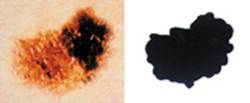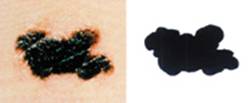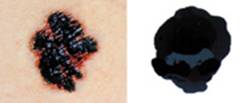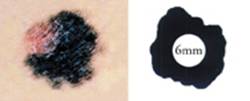Malignant MELANOMA
Melanoma is the most dangerous of skin cancers. Melanoma arises from pigment producing cells called melanocytes, and is responsible for majority of skin cancer-related deaths.
What are the warning signs of potential melanoma?
-
The first sign of melanoma is usually a change in the look of an old mole.
-
Another sign is the arrival of a new, odd-looking mole.
-
A mole that itches or bleeds should also be checked by your doctor.
-
Warning signs to look for in an old or new mole can be remembered as 'ABCDE'
Self-examination with image documentation of moles of your own body is important, however self-diagnosis and self-denial is a dangerous behavior.
If you have questions or concerns about a mole or dark spot on your skin, schedule an appointment forfull body skin cancer check.
Call: (847) 518-9999
A-B-C-D-E is what you need to look for:
|
|
Asymmetry—One half of the shape is not identical to the other. |
|
|
Border—The edges seem to be irregular, notched, ragged, or blurred, and the color of the growth may spread to influence surrounding skin. |
|
|
Color—The color is not even and may contain a number of different colors, including brown, black and tan, as well as pink, blue, red, grey, or white. |
|
|
Diameter—There is usually a change in size. Most often, melanomas are bigger than the eraser on a pencil, which is roughly a quarter of an inch or 5 millimeters. |
E for Elevation or Enlargement: the mole is raised above the skin. A mole that is enlarging is probably the most important clue that it might be melanoma.
Diagnosis and Treatment
Diagnosis of suspicious mole is done by either
-
Skin biopsy
-
Surgical excision with appropriate margins
Standard treatment options for melanoma will be based on pathology findings
-
For early-stage melanoma complete surgical excision is a definitive treatment.
-
Melanomas with stage I-II might require Sentinel Lymph Node Biopsy
-
Stages III and IV require advanced care and management
Risk Factor
-
Family history of melanoma, skin cancer, pancreatic cancer, astrocytoma
-
Personal or family history of Dysplastic Nevus Syndrome
-
Personal history of malignant tumor or melanoma
-
Previous sun exposure, sunburns
-
Diagnosis of dysplastic or atypical nevi
-
Presence of irregular, prominent moles on skin
-
Changes in size, color, symmetry, bleeding, ulceration or other, noted in moles
Early detection and removal of Melanoma is crucial - if caught and removed early it is curable. Call: (847) 518-9999
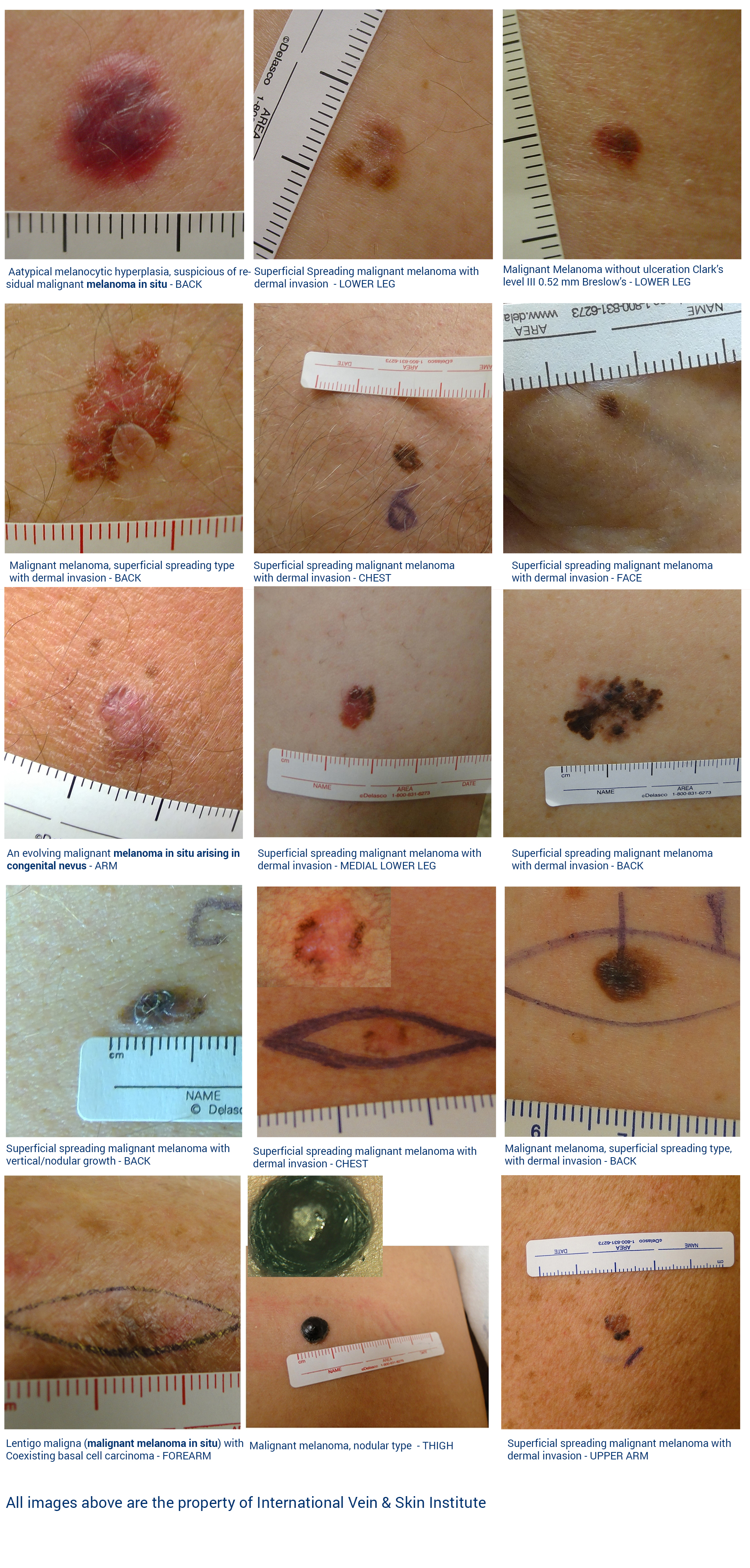
Majority of patients that were eventually diagnosed with advanced stages of malignant melanoma knew about presence of the skin lesion a long time before their diagnosis was made.
If you find any of the A-B-C-D-E changes listed above or, if you have questions
or concerns about a mole or dark spot on your skin,
schedule an appointment for a skin exam with IVSI
Call: (847) 518-9999

